This week, we've been granted the opportunity to talk with Eric Majka, Art Lead, and Corey Davis, Design Director at Psyonix, the developing team of the F2P humans vs. vampires shooter Nosgoth. Throughout this Q&A session, we were able to dive into the game's development process up to now as well as the company's future plans.
The devs talk about their findings from CBT, their thoughts on the only just launched OBT, 2 new classes as well as how they're creating the game content in general for this title set in the Legacy of Kain universe. We learn what to expect next of Nosgoth and get a quick glimpse at their development process, how much the game stays true to the Legacy of Kain franchise and to which extend it is based on player feedback. Watch our video to follow the entire interview!
We're pleased to be having a chat with two of the guys from Psyonix, the Developers behind Nosgoth the free to play vampire versus humans MMO FPS. We have with us Design Director Corey Davis and Art Lead Eric Majka. So if you guys could give us a brief intro and let us know what it is you actually do on Nosgoth?
Corey: I'm Corey Davis, Game Director on Nosgoth and Design Director at Psyonix and I'm in charge of all the designs, the character classes and gameplay and all that fun stuff. It starts with me and goes through everyone, it's a really collaborative studio so I'm the guy herding all the cats!
Eric: I’m Eric Majka and I'm the Art Lead here at Nosgoth and at Psyonix. My primary role is to coordinate the rest of the art team and to make sure that in general the game matches up with Legacy of Kain lore, matches up with the art style that we've developed and the Legacy of Kain art style.
As the game is set somewhere in the Legacy of Kain timeline, with the history, ideas and many core principles established through them do you find yourselves restricted by that when coming up with new content, mechanics and visuals, or find it a useful pool to dip into and find inspiration from?
Corey: I wouldn't say restricted so much as it's an interesting challenge. There is a lot of cool stuff in Legacy of Kain that hasn't been explored, if you dig into some of the back story on Nosgoth specifically we explore some sects and factions you haven' seen that much of in the single-player games. We view it as an opportunity to see some cool stuff or explore some things in more depth such as factions, in particular the humans, that the single-players didn't dive very deeply into from various reasons. It's a challenge in some ways, we can have hats like Team Fortress, we don't have a Valentine's Day skin, but where you play as Cupid, every ability has to be thought through pretty carefully and it'd be nice in making a generic fantasy MOBA were any character can be doing anything they want a time, but we appreciate the challenge and it focuses us.
Do you think that's more of an IP (Intellectual Property) thing, or the community stringing you up for destroying this world and lore that they love?
Corey: It isn't so much of an IP thing as were working with Square-Enix who own the IP, it’s more about being faithful to it and keeping the community happy. We invested really early with Square and getting the guys on-board and we didn't want to stomp all over a really great franchise.
The game just went into Open Beta last week, you find with different games the whole beta process serves different purposes, what was the purpose of your Closed Beta and what did you learn from it, then also going forward what is the aim for Open Beta?
Corey: I would say our closed beta had two primary purposes; number one was game balance and design which, we say a lot, we design something and put it out there and then within two hours the community is not only better at it but they have also found strategies that we never think of. It was very much to test that in terms of "Can you guys break this stuff?", "How are you going to play it that we don’t anticipate". Secondly was the technical; it’s really important to launch with a stable matchmaking system and all the bells and whistles that people expect from a multiplayer these days, so that's what the last few months of closed beta was all about. We went through a tough time, we had a lot of problems with the matchmaking system, with deployed a whole new system, we ended up crediting a lot of the players with a couple of cool items just because they stuck with us through that.
Open beta is really just broadening that audience, listening to the feedback, saying "we’ve delivered a solid base product, where do you want to go from here?"
Do you have any idea how long you can be in Open Beta, or will it be another one of these free to play MMOs where two years later it’s still an "open beta" because they want to avoid the cries when it becomes a launched title?
Corey: Sure, it's understandable. We don't have a set date on any kind of release right now, so yeah, I don't have anything to comment on; when it's ready.
At GamesCom back in August we got to speak with Cat Karskens about the status of the game and you had released the Deceiver and the Prophet. How has the introduction of the new classes been generally received?
Corey: Pretty positively, the Deceiver had released in the spring and so has been out for a while now and they both added a lot to the meta game, which was cool, and we're continuing to refine them. In general any time we add a class its crazy week or two where everybody plays them and then it settles down. Were just about to add two more characters that we talked about last week on our Dev stream: the Vampire Summoner and the Human Shield Barer, which we think will add more to the meta game and competitive play.
Eric: In general the Deceiver and the Prophet have hit a really nice stride with the community, we watch a lot of people on stream play the game just because it's a terrific way to get a live feedback of what's going on and you can see it basically in a live environment so I’ve watched a lot of people play as these classes, who are so much better than we are at the game. You'll see a lot of things that wall spark conversation in the chat or on our main forums or the Steam community where some people might say the Prophet is overpowered whereas others are saying that she needs more buffs. We look at stuff like that and in a way it's a great place to be because you've got some people who think she's too good, and others that don't think it, so if everyone thought that it was overpowered or underpowered then clearly there's probably community consensus, but when it's split maybe it's just because some people are really good or really bad.
You're saying that about the balance, with a closed beta is balanced on a gameplay, I believe Corey you mentioned in your Meet the Team video feature on the Nosgoth website a while back that the biggest challenge about designing the game is keeping things balanced. How do you go about that due to the range of abilities and support style classes you have can’t be as simple as "who does the most damage or gets the most kills"?
Corey: Two big approaches. One is that we are a very play test driven studio, so we've been playing Nosgoth every day and as a team for the last however many years we've been working on it, and that's our number one source of feedback. We've gotten pretty good at identifying stuff. On top of that people always play the game differently than we do so we rely heavily on data and metrics so we get daily reports on what's the vampire win rate today? What classes are doing the best in kill death ratio? What ability is being purchased the most? So we use a lot of data to back up our assumptions. In general though it's just about “does it feel good to play as and does it seem like it causes an unfair advantage?". The bigger challenges in the game aren't specific abilities but more to do with the balance curve across players of different skill levels, as it’s an asymmetrical game a change to improve Humans at the low-end for new players might completely wreck the balance of the game for very good players.
Eric: In our daily play test we pull in people from different disciplines from within the development team, so we will have a very nice split between members of the art team, members of the programming team, the production team, QA, etc. So we have a core group of players that play the most and we can gain daily consistent feedback, so if we make a small change to the something we can ask how does it feel different to yesterday’s play test? Programmers will see it different to the art team. Sometimes we'll swap it out a little and bring a little focus group of people who haven't gotten in the daily play test, who are still part of the team, and they might not have played it for a week and can tell us what they think about it coming out with a fresh set of eyes, which mimics the skill range of players we have in the actual community.
You mentioned the Summoner and Shield Barer classes, can you tell us a little about them both, how they came about and how they fit into the different factions?
Eric: So all the vampires that we have, in staying true to the Legacy of Kain series, there were different clans that were under Kain, who obviously the series in named after. Each one of them in the original games had a personality, as you dig into lore you can see the differences between not only how they looked but how they acted and their mannerisms so we would take elements of those clans to build the classes. The Summoner was one where we tapped into her clan and figured out that their bodies are falling apart from all the experimentation that they've been doing to themselves to make themselves more powerful. So she's kind of falling apart and trying to hold herself together Frankenstein style, more so in our current timeline and they're more like zombies walking around. Her skill set plays with that idea, using skills that aren't only going to be fun and add a new element to the gameplay, not just a different looking version of other classes. So we brought in a pet class where she summons these twisted creatures from beyond using her dark arts that she shouldn't be messing with, she has a little more ranged capability, but not too much as we like to keep vampires as melee up close and the Humans being the ranged group.
Corey: For the Shield Barer, who we are expecting to release at the end of next month once we've seen how the Summoner goes, we really wanted to introduce a tankier class that wasn't your typical sword and shield character; there's been a lot of demand for it. We really wanted someone that, if not go to toe to toe with a vampire, be a little bit harder to take down. Right now humans have a lot of capabilities to disrupt the vampires but if they get up on you then you are pretty much toast by design. The Shield Barer has a blocking mechanic with his shield that allows them to absorb a number of hits and that really changes the calculus of how vampires approach him and a team fight in general when there's suddenly someone you have to outflank and outmanoeuvre to kill reliably. To keep with the theme of ranged versus melee he has these throwing weapons that range from a kama, a hand held throwing sickle, to actual throwing axes that are really satisfying to use. We’re tuning him for release and as with the other classes he can focus on defense or offensive loadouts, where he's either shield bashing or forming a shield wall for allies, depending on how players want to use them.
How does the design process work for new content, whether classes or maps. Do the ideas come first, rough sketches of what you can take out of the lore and what might be cool, or does it start with a more mechanics based process and seeing how you can get it from the lore available?
Corey: It varies from character to character. Eric talked a lot about how the Summoner came into being, in a lot of ways she was driven by us wanting to make a character from this clan and what would that clan do in Nosgoth. The Shield Barer was more driven by us wanting a shield based tank character, so what is that look like in the lore? So I would say both directions depending on what we're looking for at the time and what presents itself.
The next vampire, we have one clan left, has fairly specific characteristics, so that will be partially driven for what makes sense for that clan rather than a specific need in the gameplay.
So what can we expect next?
Corey: We are about to release a timeline of the tentative features to have a little more transparency with the community and that will detail stuff. The highlight features that we're looking to get out as soon as possible are a spectator mode for tournaments and esports so that people can log in and watch a competitive match without actually participating, with observer tools and other fun stuff. A crafting system that allows you to break down existing items into parts and you'll also receive those from playing matches and can use them to enchant existing weapons to a higher quality or reroll stats on a weapon that you don't want. Also a new map for Turelim the Tyrant, his home town.
Eric: With our original maps there was a lot of human territories because we're not just trying to regurgitate Legacy of Kain stuff that has been done, the whole series in general has such an immense storyline that there is no sense in making the same thing that they made in last four games. Now we're expanding and our last map that we released was a vampire map for Raziel's clan, so now we're branching out into Turel's clan, which has given us another way, as with the character classes, to reflect the clans and factions personalities. It is designed to look a lot different to Raziel's clan as well as adding variety to how the map looks and is played, we want it to be as true to these things as possible and it gives a chance with this map to add in some of the larger landmarks that people would recognise from the original games.
Thanks for your time and for answering our questions guys. Anything else she doesn't like to add?
Corey & Eric: It’s free to play!
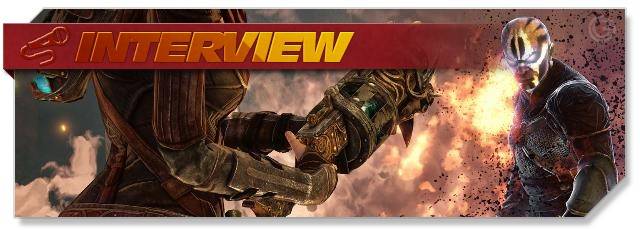
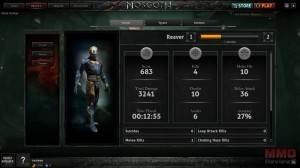
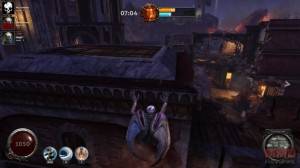
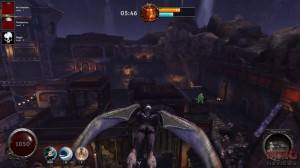
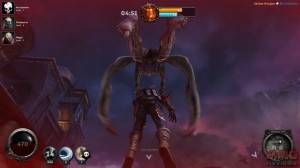
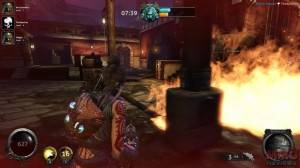
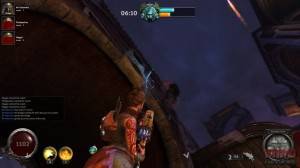
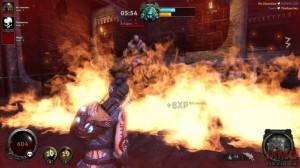
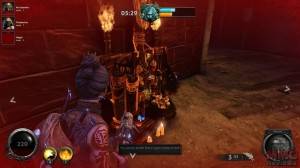


Deja tu comentario
You must be logged in to post a comment.